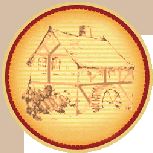by Les Saidel - February, 2013
One of the most vivid olfactory memories of my youth was the day before Purim each year. We would wake up, my 2 brothers and I, to the unforgettable aroma of fermenting Hamantaschen dough. When my Bobba Lily z"l was still alive, it was her job to make Hamantaschen, but when she passed away this task became my mother's.
It is impossible to describe the torment of three youths who were invariably fasting (because it was Ta'anit Esther), having to endure the heavenly aromas of baking Hamantaschen wafting through the home. We sure made up for it on Purim though.
As far back as I can remember, my family never went to buy Hamantaschen in a store or a bakery, they were always home-made - filled with Mohn (poppy seeds) or sweet cream cheese.
Yeasted Hamantaschen were a standard in South Africa where I grew up. Nobody had even heard of a biscuit/cookie Hamantasch.
When I made aliyah aged 21, I knew I would be sacrificing a number of "comforts" that I had become accustomed to from the land of my youth (the one I still miss the most is Sundays), but never in my wildest dreams did I imagine that I would not be able to find a yeasted Hamantasch anywhere.
My first Purim in Israel was a mixed bag of emotions, firstly ecstatic pleasure at celebrating my first Purim in the Land of my Fathers, but also intense culinary disappointment with the locally made Hamantaschen. Not a yeasted Hamantasch in sight, only tiny, biscuit Hamantaschen being peddled from every street corner, weeks before the event.
Israel is certainly a melting pot and I have learnt to love much of the exotic and pikanti cuisine derived from multiple cultures in this bustling country, but I have never been able to get used to biscuit Hamantaschen.
A year after I came on aliyah, my parents and the rest of my family followed and that year not only did I celebrate the rest of my family joining me in the Holy Land but I also enjoyed my long lost South African style yeasted Hamantaschen when my mother made the home-made Hamantaschen of my youth once again.
Somehow though, over the years, perhaps due to the rigorous pace of life in this country, the practice of making Hamantaschen at home began to wane and we learnt to live with second best.
When we opened our family bakery in 2008, come Purim time, I resolved that I was going to revive this tradition and bake the elusive Hamantaschen of my youth, not only for my personal and my family's enjoyment, but for all South Africans who perhaps also missed them as much as I.
The response was phenomenal, but even more of an eye opener were the responses I received from non-South Africans. Numerous people from multiple denominations informed me that yeasted Hamantaschen are not exclusively South African in origin. They remembered their grandmothers in America, England, Argentina etc. making the very same Hamantaschen.
After conducting some research into the matter I discovered that indeed yeasted Hamantaschen were not the sole domain of South Africa, but rather originated in Russia and Eastern Europe. Anyone who emigrated from there to other places in the world took with them this family tradition.
Stangely enough though I could not find a single bakery here in Israel that made yeasted Hamantaschen, despite the fact that many in this country are of Eastern European and Russian origin.
As far as I know, we are still the only bakery in the country that makes them. This curiosity caught the eye of a reporter from Haaretz Herald Tribune, who decided to do a feature article on this interesting story. See the following link.
This last Purim we made over 1500 "old-style" yeasted Hamantschen that were enjoyed countrywide by people from every denomination.
I can truly feel my Bobba z"l smiling down on me knowing that I am continuing her tradition and filling my home and the home of countless others with that same delicious aroma of home-made yeasted Hamantaschen every Purim.
Les Saidel
© Copyright. All rights in the above articles are reserved to the author Les Saidel.
No part of this website or the above articles may be transmitted in any form or by any
means without permission in writing from the author.




